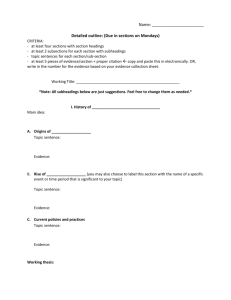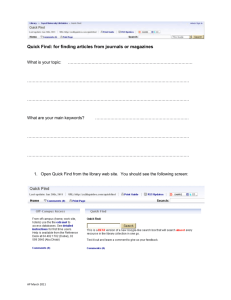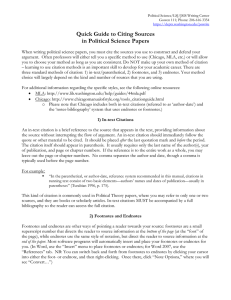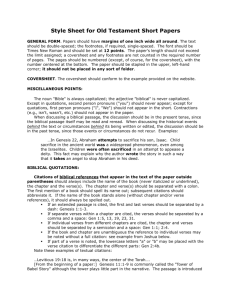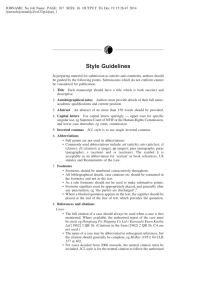Analysis of Student Papers (Former CAP 3A)
advertisement
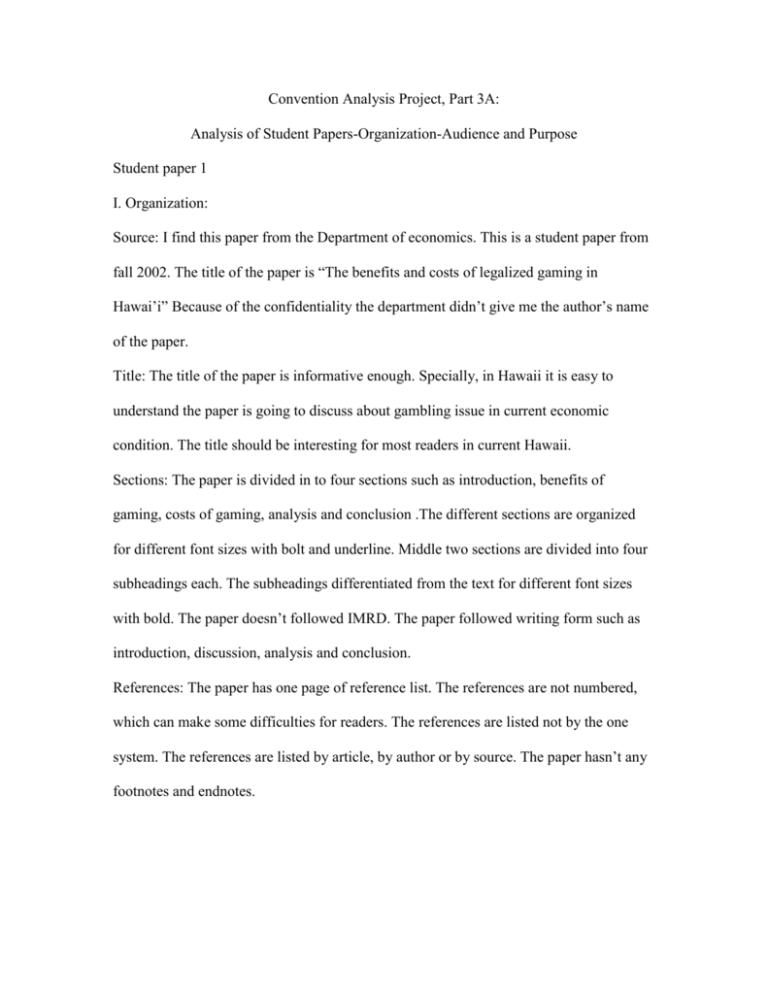
Convention Analysis Project, Part 3A: Analysis of Student Papers-Organization-Audience and Purpose Student paper 1 I. Organization: Source: I find this paper from the Department of economics. This is a student paper from fall 2002. The title of the paper is “The benefits and costs of legalized gaming in Hawai’i” Because of the confidentiality the department didn’t give me the author’s name of the paper. Title: The title of the paper is informative enough. Specially, in Hawaii it is easy to understand the paper is going to discuss about gambling issue in current economic condition. The title should be interesting for most readers in current Hawaii. Sections: The paper is divided in to four sections such as introduction, benefits of gaming, costs of gaming, analysis and conclusion .The different sections are organized for different font sizes with bolt and underline. Middle two sections are divided into four subheadings each. The subheadings differentiated from the text for different font sizes with bold. The paper doesn’t followed IMRD. The paper followed writing form such as introduction, discussion, analysis and conclusion. References: The paper has one page of reference list. The references are not numbered, which can make some difficulties for readers. The references are listed not by the one system. The references are listed by article, by author or by source. The paper hasn’t any footnotes and endnotes. Citations: The text of the paper included many citations from the different sources. About 30 percent of the paper has a citation form. The author used all kind of citation types: summary, paraphrase and direct quotations. Tables and Figures: The author is used many data from different sources. The data are included in the main text. Often-used expressions for referring the data are: according to, another study conducted, estimates that, there are a few examples. There are no tables and figures in the paper. Similarities: The formatting order for sections of this paper is similar to articles I have analysed in Par 1 of CAP. Most articles were divided in to sections like as in this paper: introduction followed by discussion and analysing part, finally conclusion. This paper and articles both used separate page for reference list. Differences: While articles analysed in Par 1 of CAP were used many tables, figures, mathematical equations, footnotes and endnotes, the paper does not used any of them. Articles were included citations mostly from scientific sources. The paper used for citation mostly newsletters and periodical handouts. II. Purpose: The purpose of this paper is indicated at the end of the introduction part. According to the author purpose of this paper is to present positive analysis of the benefits and costs of legalized gaming in Hawaii and it’s influence on economic development of Hawaii. III. Audience Because of this paper is due to Economic Department subject, the first audience of the paper was a professor, who is quite knowledgeable about the topic. However the paper can be published in the newsletter and average reader will understand content of the paper. The paper written on the basis of newsletter article sources. Student paper 2 Organization: Source: I fund this paper also from the Department of economics. This is a student paper from fall 2002. The title of the paper is “Deforestation: Who is Responsible and Who Should Pay”. Because of the confidentiality the department didn’t give me the author’s name of the paper. Title: The title of the paper is informative. It isn’t difficult to understand the author is going to discuss about deforestation and its responsibility. The title used colon: Before the colon general purpose of paper and after the colon specific interest of the study. Sections: The paper is divided into eight small sections, beginning from the introduction finalising for conclusion .The different sections are organized for different font sizes with bolt and underline. Sections are not divided into subheadings. The paper doesn’t followed IMRD. The paper followed writing form such as introduction, analysis and conclusion. References: The paper has half page of reference list. The references are not numbered, which can make some difficulties for readers. The references are listed not by the one system. The references are listed by article, by author or by source. The paper has included one footnote. But it is difficult to fund where is cited this footnote. Citations: The text of the paper is included citations from the different sources. About 10 percent of the paper has a citation form. The author used all kind of citation types: summary, paraphrase and direct quotations. Tables and Figures: The author rarely used data. The data are included in the main text. Expressions used for referring the data are: estimates that, for examples. There are no tables and figures in the paper. Similarities: The formatting order for sections of this paper is similar to articles I have analysed in Par 1 of CAP. Most articles were divided in to sections as in this paper: introduction followed by discussion and analysing part, finally conclusion. This paper and articles both used separate page for reference list. Differences: While articles which analysed in Par 1 of CAP were used many tables, figures, mathematical equations, footnotes and endnotes the paper does not use any of them. II. Purpose: The purpose of this paper is indicated at the end of the introduction part. According to the author purpose of this paper is to analyse of reason and impact of deforestation, it’s value and responsibility for forest. III. Audience Because this paper is due to Economic Department subject, the first audience of the paper was a professor, who is quite knowledgeable about the topic. But average educated reader can understand content of the paper. Author didn’t use scientific approaches and present findings, but includes major uses of commentary. .

